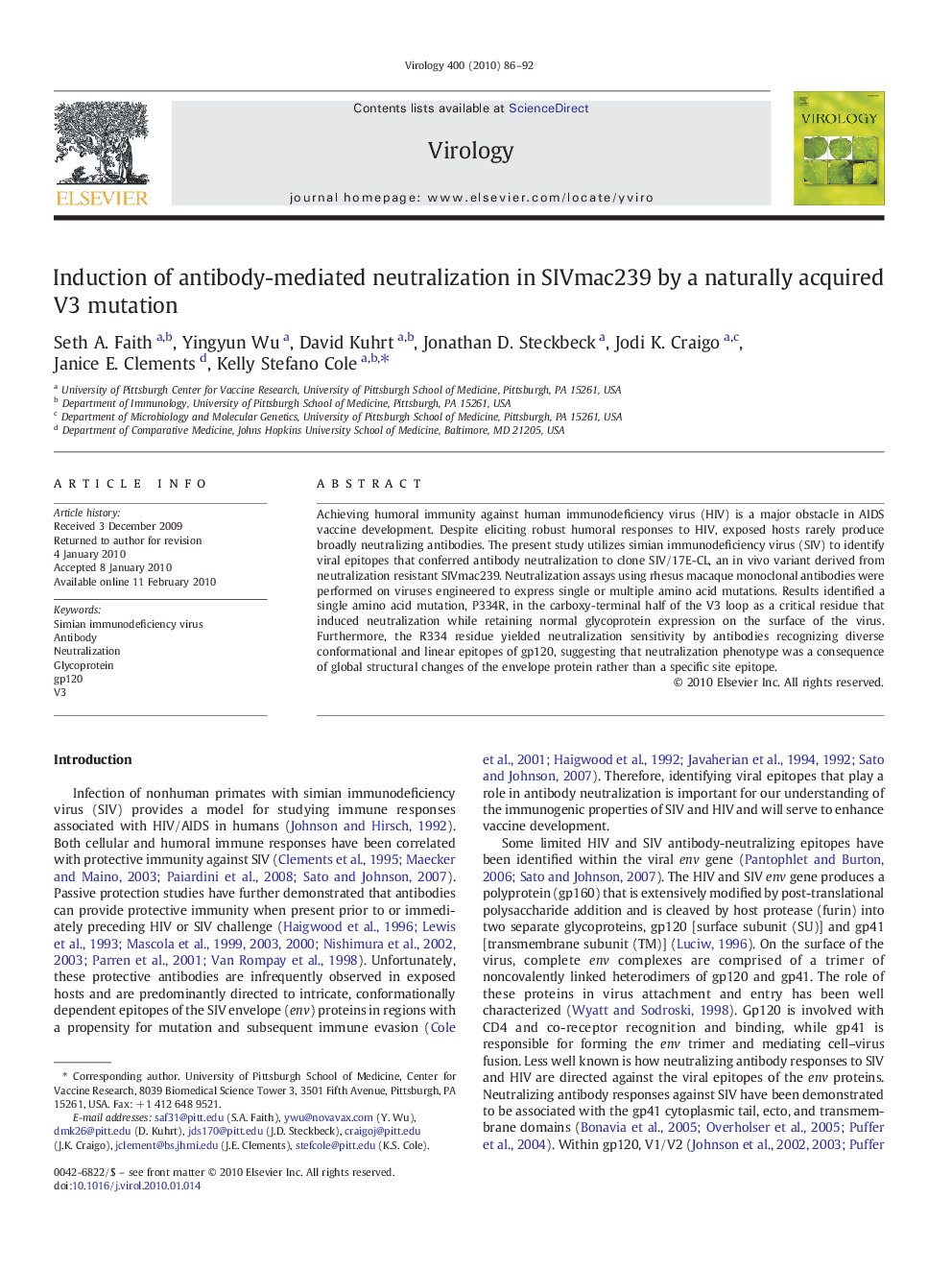| Article ID | Journal | Published Year | Pages | File Type |
|---|---|---|---|---|
| 3425121 | Virology | 2010 | 7 Pages |
Achieving humoral immunity against human immunodeficiency virus (HIV) is a major obstacle in AIDS vaccine development. Despite eliciting robust humoral responses to HIV, exposed hosts rarely produce broadly neutralizing antibodies. The present study utilizes simian immunodeficiency virus (SIV) to identify viral epitopes that conferred antibody neutralization to clone SIV/17E-CL, an in vivo variant derived from neutralization resistant SIVmac239. Neutralization assays using rhesus macaque monoclonal antibodies were performed on viruses engineered to express single or multiple amino acid mutations. Results identified a single amino acid mutation, P334R, in the carboxy-terminal half of the V3 loop as a critical residue that induced neutralization while retaining normal glycoprotein expression on the surface of the virus. Furthermore, the R334 residue yielded neutralization sensitivity by antibodies recognizing diverse conformational and linear epitopes of gp120, suggesting that neutralization phenotype was a consequence of global structural changes of the envelope protein rather than a specific site epitope.
